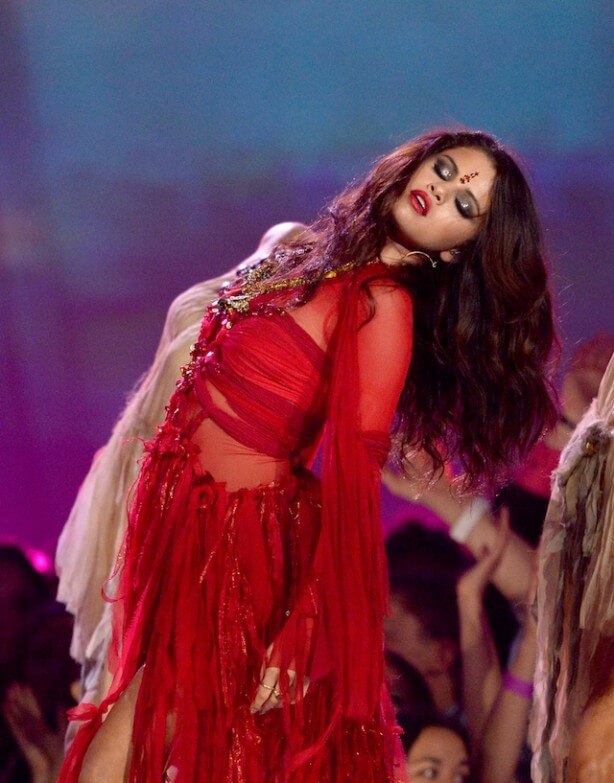It’s music festival season, which means you can expect to see lots of Instagrams of celebs and models wearing all sorts of controversial, culturally inappropriate accessories, like Native American headdresses or South Asian bindis. And no matter how much backlash they face, consumers — and designers — can’t seem to stop stealing from other cultures. Indeed, “appropriation” seems to have reached a fever pitch in fashion: baby hairs on the Givenchy and DKNY runways, “squaw” (!) fashion at Dsquared2, an exact replica of a traditional Oaxacan blouse by French designer Isabel Marant. Even the Metropolitan Museum’s Costume Institute broaches the subject in its current exhibition, “China: Through the Looking Glass,” about the ways in which Western couturiers have appropriated, remixed and reimagined Chinese imagery for over a century. “It’s been going on for a long time,” says historian Valerie Steele, director of the Museum at the Fashion Institute of Technology. “But while the feeling that it’s a rather problematic phenomenon has existed among scholars, it’s been slow to filter down to the fashion world.” That’s partly because designers and tastemakers couched such practices in terms like “multiculturalism” or even “postmodernism.” Indeed, wearing a garment derived from another culture signified one’s sophistication and open-mindedness. Yet, says Steele, “it’s too easy to say that it was always celebratory — particularly when it’s referenced in racist language or done in a way that reinforces cultural stereotypes.” (Think Yves Saint Laurent’s Orient-fetishizing “ Opium ” perfume, or the horrifyingly named “coolie” hats inspired by Chinese fieldworkers, or Givenchy’s so-called ”Victorian chola” girls today.) But even without racist language — and even with the best of intentions — cultural thievery can still be harmful, whether economically, socially or spiritually. “Many South African designers, for example, are resentful that European designers have appropriated their designs and textiles, and then lumped a variety of different, distinct cultures together under one name,” says Steele. Native Americans have also been very vocal about designers misrepresenting their culture —calling all manner of vaguely Southwestern prints “Navajo,” for instance. And the Australian Aborigines have spoken out about designers blithely using certain patterns that are sacred or that hold special meaning — like the bindi in Hinduism. The main difference between cultural appropriation then vs. now? The Internet has made it much easier for those who feel their culture and traditions threatened to speak out. But, rather than preventing consumers from engaging with another culture’s sartorial customs, it actually allows them to do so in a way that’s empowering and sensitive. “If you’re a white person, but you really love AfricanKentecloth — do the research,” says Steele. “Ask your African-American friends, ‘Will you be offended if I wore this?’” If you can’t get African cloth straight from the source, then research brands that employ — and provide a living wage to — craftsmen in that area for its clothes. “Talk to people,” says Steele. “If you are open and curious and say, ‘I admire this, I like it, how can I wear it?’ then people will take you seriously and respond to you.”
Is your festival outfit racist?

Getty


















